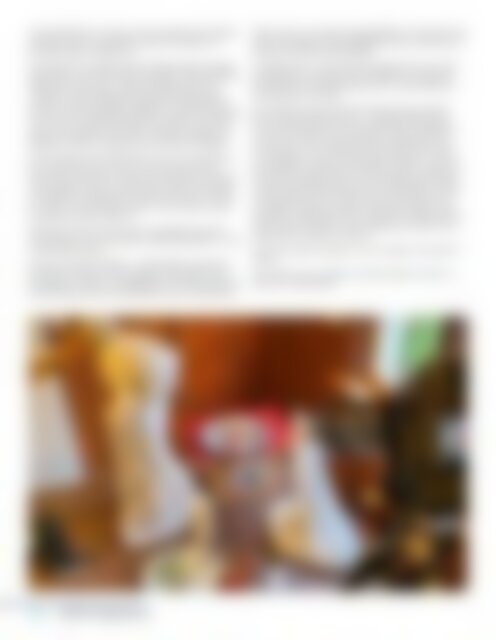NZPhotographer Issue 35, September 2020
As of December 2022, NZPhotographer magazine is only available when you purchase an annual or monthly subscription via the NZP website. Find out more: www.nzphotographer.nz
As of December 2022, NZPhotographer magazine is only available when you purchase an annual or monthly subscription via the NZP website. Find out more: www.nzphotographer.nz
Create successful ePaper yourself
Turn your PDF publications into a flip-book with our unique Google optimized e-Paper software.
when diffused by clouds so those desired soft shadow<br />
transitions are not something natural sunlight can<br />
provide without assistance.<br />
In restaurant or cafe locations where there are large<br />
open areas, the harshness of the light is often already<br />
diffused in some way – either through shop front<br />
windows or from being bounced off walls or other<br />
surfaces. Where soft light is desired (my preference)<br />
this can mean additional diffusion is often not needed<br />
and in fact, using natural light can lead to less time<br />
spent on taking the shot due to setting up lights and<br />
therefore means a quicker turn around on images.<br />
That’s all good and well when you’re out and about<br />
but what do you do when you’re stuck at home<br />
because of lockdown, have only the kitchen window<br />
as your light source, and still want to fill your portfolio<br />
with delicious looking food photos that don’t scream<br />
of “here’s a quick phone snap of the chicken salad<br />
the kids and I just made.”?!<br />
Here are a few tips and tricks, including one quick<br />
and simple way of solving the ‘lighting problem’ in the<br />
home environment.<br />
As you can see in image 1, natural light is pouring in<br />
the kitchen window to the right of my yoghurt and<br />
strawberry croissant. Unsurprisingly, that has produced<br />
hard shadows even with diffusion from a cloudy day.<br />
There is also not quite enough lighting on the left-hand<br />
side of the plate to fully highlight the juicy freshness of<br />
the just purchased strawberries.<br />
To resolve this, I could swivel the plate around so the<br />
strawberries are facing into the light but I would still<br />
be left with unwanted shadows plus I quite liked the<br />
strawberries on the left.<br />
My solution was to leave the plate alone and add<br />
in two artificial light sources – a freestanding lamp<br />
from the lounge, and a small desk lamp. These lights<br />
on their own have the potential to overpower the<br />
scene since I am unable to easily adjust their output<br />
so I needed to reduce their impact instead – not by<br />
moving them away from the plate, which is often the<br />
first option people think of, but by diffusing their light<br />
output using some pillowcases. The left lamp is as big<br />
as the plate and has a 53w warm tinted bulb in it so<br />
it’s bright enough to warrant using both sides of the<br />
pillowcase. The desk lamp is quite a lot smaller and as<br />
it just had a <strong>35</strong>w bulb, I only needed one side of the<br />
pillowcase to soften its impact.<br />
Hint: The closer the light is to your subject, the softer it<br />
will be.<br />
Hint: Only turn your lights on when ready to shoot to<br />
prevent overheating.<br />
IMAGE 1<br />
60<br />
<strong>NZPhotographer</strong>


















